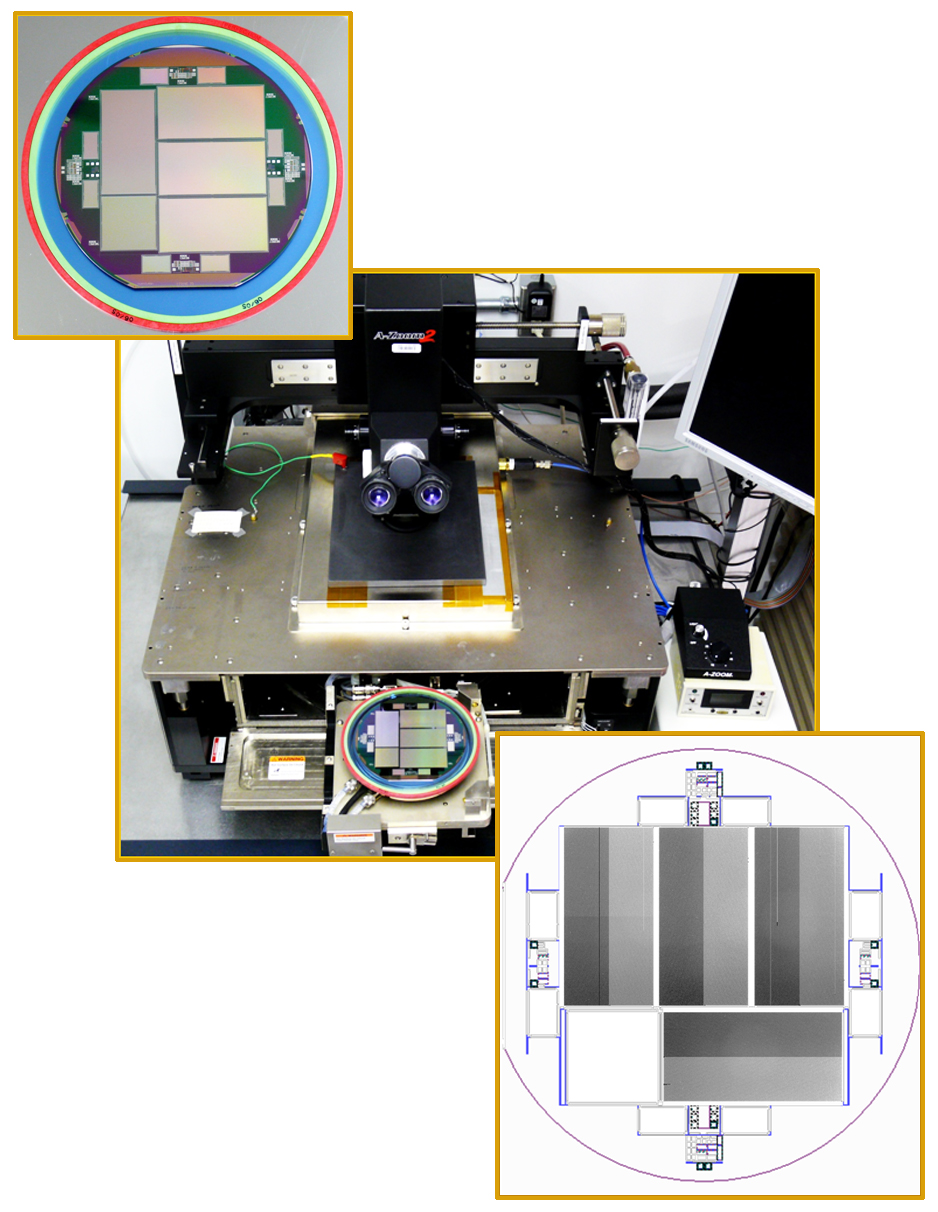Galaxies up to 8 billion light years away were captured on DECam’s focal plane. DECam was built by the Dark Energy Survey (DES) collaboration based at the Fermi National Accelerator Laboratory. A photometric imaging camera, it measures the amount of light in various colors from astronomical objects rather than details of their spectra. DECAM’s goal is to measure the expansion history of the universe by collecting images of 4,000 distant supernovae and 300 million distant galaxies within the next five years.
DECam will produce the largest-ever 3-D map of the universe, a record currently held by the third Sloan Digital Sky Survey and its largest component, the Baryon Oscillation Spectroscopic Survey (BOSS).
The imager consists of 62 charge-coupled devices (CCDs) developed by engineers and physicists at Lawrence Berkeley National Laboratory. The DECam chips were fabricated by Teledyne DALSA Semiconductor. Partially finished wafers holding four CCDs, each with eight of eleven masking steps completed, were commercially thinned, then sent to the Physics Division’s MicroSystems Laboratory for completion.

Credit: Lawrence Berkeley National Laboratory
The CCDs are noted for their exceptionally high sensitivity to light (quantum efficiency), particularly in the red and infrared regions of the spectrum; a crucial advantage when searching for objects at extremely high redshifts. Combining the 570-million-pixel focal plane made of the CCDs with the light-gathering power of the Blanco telescope’s 4-meter mirror, DECam has unique ability to reach wide and deep into the night sky.
Manufacture of the DECam CCDs was overseen by Steve Holland, a senior engineer in Berkeley Lab’s Engineering Division who invented the Berkeley Lab CCD in the mid-1990s as a spin-off from research and development of detectors for high-energy physics. Most astronomical CCDs at the time were fragile affairs because, to be sensitive to faint light, they had to be thinned to about 20 micrometers, a fraction of the roughly 100-micrometer width of a human hair.
The newer CCDs are beefy by contrast – the DECam CCDs measure a robust 250 micrometers thick - but they maintain high resolution across the spectrum, including in blue light. When photons hit the back surface of the chip, the holes they create (the positively charged equivalents of electrons) are pulled through to the circuitry on the front by an electric field generated by a bias voltage, which permeates the entire thickness of the CCD.
In red light, with more material to capture long-wavelength red photons and enough thickness to suppress surface reflections that cause interference fringes, Berkeley Lab CCDs are far superior to the typical astronomical CCD. Fabrication methods for ultrapure silicon originally developed for high-energy physics insure that the Berkeley Lab CCD’s “dark current” – charges originating inside the chip, a source of false signals – is also low.
“Cold-probe” tests at minus 45 degrees Celsius were performed to detect shorts, defects, and excessive dark current. The CCDs were cut from the wafer and sent to Fermilab for mounting and final testing of the science-grade devices.
Current and former members of the Berkeley Lab Physics and Engineering Divisions who contributed to DECam include Chris Bebek, Kyle Dawson (now at the University of Utah), John Emes, Don Groom, Steve Holland, Armin Karcher, Bill Kolbe, Julie Lee, Michael Levi, Nick Palaio, Natalie Roe, Co Tran, and Guobin Wang.






Comments